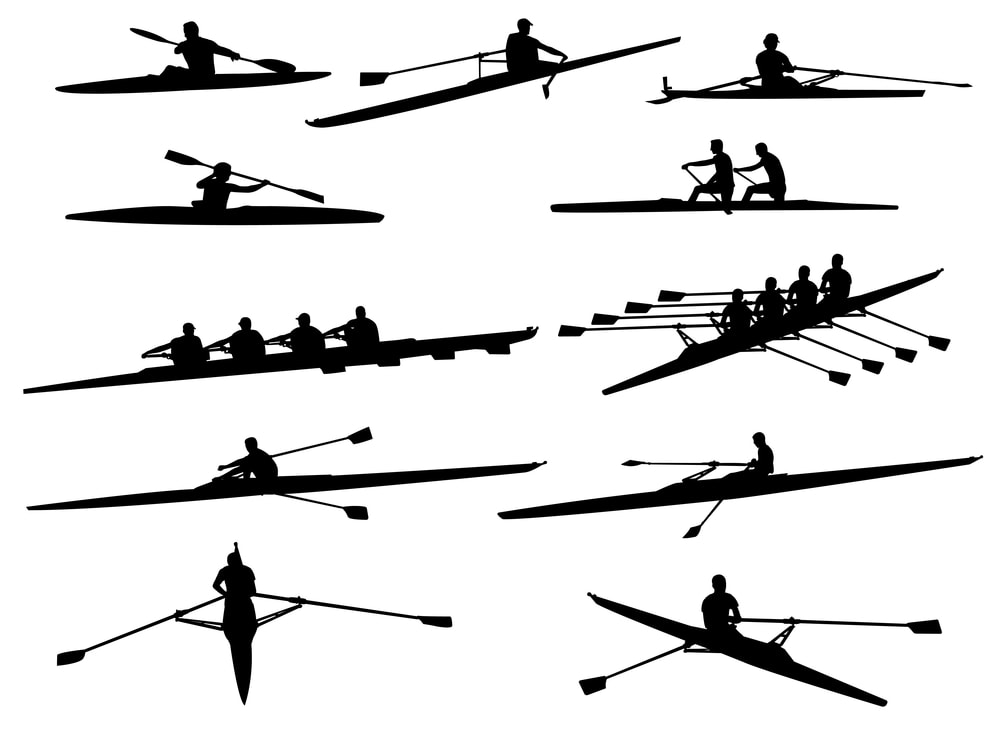The Evolution of Competitive Rowing (Part I)
Rowboats first made their appearance around six centuries ago, as an efficient means of transportation. They also proved to be quite adept vehicles for warfare, making it easier to invade enemy lands by waterway. While built to fulfill practical needs, rowboats have also served as a sporting device from early on in their history. From a water vehicle of convenience and necessity, rowing has become one of the favorite sports in the world. Let's take a look at its evolution:
Rowboats first made their appearance around six centuries ago, as an efficient means of transportation. They also proved to be quite adept vehicles for warfare, making it easier to invade enemy lands by waterway. While built to fulfill practical needs, rowboats have also served as a sporting device from early on in their history. From a water vehicle of convenience and necessity, rowing has become one of the favorite sports in the world. Let's take a look at its evolution:
1430 BC - Rowing Makes It's First Recreational Appearance
The first evidence of rowing as a sport was found as early as 1430 BC in ancient Egyptian funerary art where it was described as part of the funeral games. Additional evidence was found around the same period in Venice, where the elaborate waterways were perfect for rowboats. As a consequence, they became the boat of choice for pleasure, trading, and sport - rowboat owners were naturally drawn to using their boat not only for work but also for fun. This lead to the birth of the regatta, which was first mentioned in historical Venetian documents in 1274. Gradually, the waterways of Venice became busy with regatta boat races and festivals, well attended and enjoyed by the local population.
1454 - A Big Leap Forward for Competitive Rowing
In 1454, the sport of rowing took a big leap into formalization. In Great Britain, professional guilds began sponsoring rowing teams, and the first "Lord Mayor’s Water-Procession" was held. Over the years, this event grew and developed, it was held every year for 400 years, until 1856.
1715 - The Oldest Annual Rowing Race Was First Held
Rowing had now become a sport not only for rowers and spectators, but also for local bookies and gamblers. The oldest annual boat race in the world is called the “Doggett’s Coat and Badge” race. It began in 1715 and has been taking place ever since. The last event was in July 2017, the 2018 date has yet to be determined. The course extends across 7.4 kilometers of the Thames River, between Chelsea Harbor and London Bridge.
1756 - The Rowboat Races to America
The sport of rowing traveled to America along with all the other cultural icons that came from Europe. The first recorded race in America took place in 1756 in the New York harbor. The city that never sleeps quickly became a bustling rowing venue.
1815 - Rowing Hits University Campuses
Perhaps the institutions that are most associated with the sport of rowing are Ivy League Universities. Oxford was the first to establish its own boat club in 1815. Yale and Harvard followed suit, and rowing became much-cherished among elite students. Shortly thereafter, competitive rowing crews could also be found in military academies, particularly West Point and the Naval Academy.
Rowing provided colleges with a new way to compete against each other outside of the classroom. Beginning with the first official race between Yale and Harvard in 1852, collegiate bodies began to add rowing to their prestigious list of competitive sports. In 1903, as rowing become more and more popular on college campuses, university administrations formalized the sport by founding the Intercollegiate Rowing Association. This Association would later be folded into the NCAA—National College Athletic Association.
1900 - Rowing Becomes an Olympic Sport
The battle over who has the best rowing team spread across the world and quickly turned into an international competition zone. Rowing became an Olympic sport in 1900 and America immediately caught the lead. However, later it would face a number of defeats at the hands of the Brits, prompting organizers to use college rowing teams in future competitions.
The ancient rowers would probably not recognize today’s rowboats. They are constructed from technologically advanced materials, their bodies are light, aerodynamic and built for speed and maneuverability. They have come a long way from the wooden boats of Egypt.



